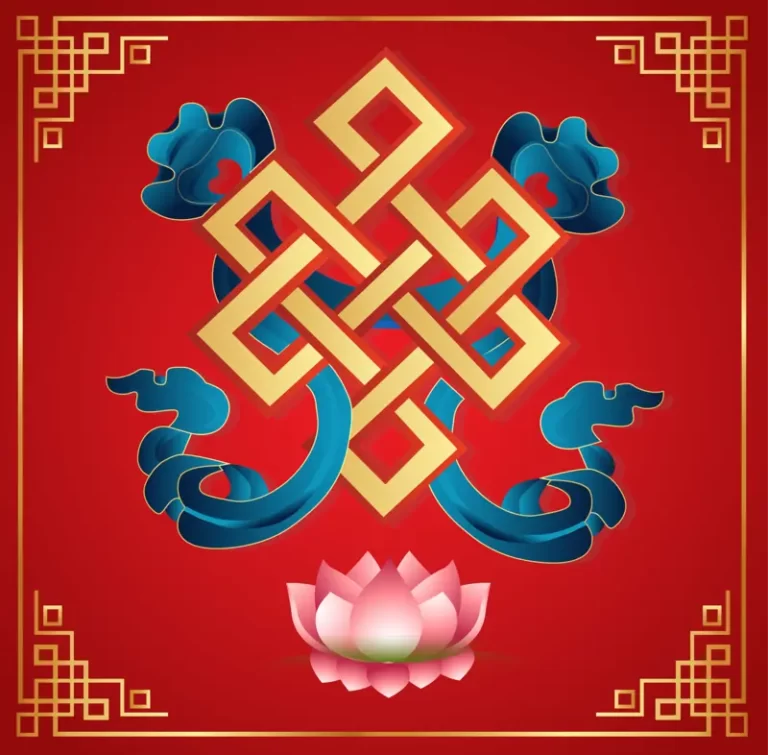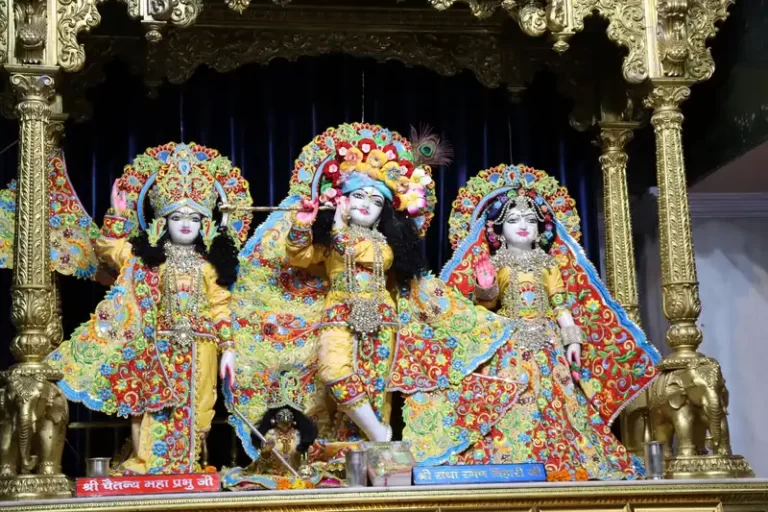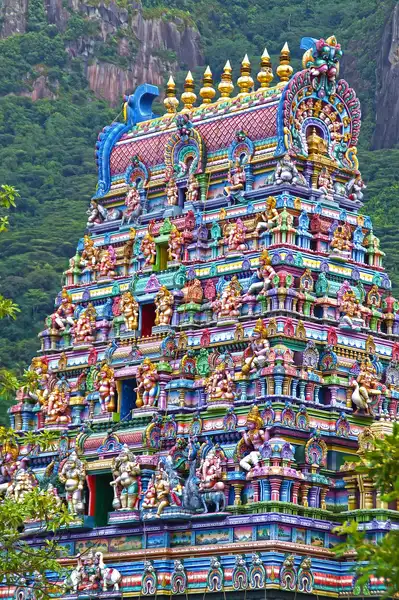Adhik Maas: The Unique Phenomenon in the Hindu Calendar
Introduction:
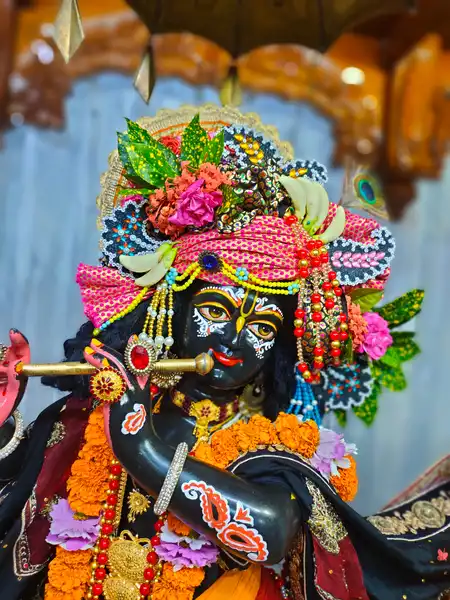
A remarkable facet, Adhik Maas, surfaces every 32 months to synchronize lunar and solar calendars – a vital adjustment due to the dissimilarity in the duration of lunar (about 354 days) and solar (approximately 365 days) years. Termed Adhik Maas, or alternatively, Purushottam Maas, Mala Maas, or Malimasa, this temporal interlude is held in profound veneration as a period for introspection, devotion, and self-renewal.
Spanning the expansive Indian subcontinent, Adhik Maas adopts various appellations, each laden with distinct cultural connotations. ‘Mala Maas’ brings forth ideas of purity and benevolence, while ‘Malimasa’ underscores its distinctive place within the calendar. Its advent is heralded by practices encompassing rituals, fasting, prayers, and ceremonial river immersions.
The Occurrence of Adhik Maas:

The foundational contrast between lunar and solar calendars centers on their guiding principles. A lunar calendar traces the moon’s cycles, assigning each month to a lunar orbit around Earth, resulting in a slightly shorter year than the solar calendar. In contrast, the solar calendar aligns with Earth’s annual orbit around the sun, leading to a more accurate year-length calculation.
The solar year comprises approximately 365.2422 days, while the lunar year averages around 354 days. This leads to an 11-day and some hours discrepancy between the two calendars each year. To harmonize this, an additional lunar month is added every 27 to 35 months, typically occurring every 32.5 months. This extra month, known as Adhik Maas, has no Sankranti and serves as the thirteenth lunar month.
In addition to years with Adhik Maas (13 months), there are also rare occurrences of special years with only 11 months, happening roughly once every 140 to 190 years.
Adhik Maas usually falls within one of the seven months from Chaitra to Ashvin, occasionally also in Phalgun. Its recurrence in the same month has a gap of 19 years. Adhik Maas cannot fall within Margseersha to Magh, and its appearance in Kartik is extremely uncommon, transpiring only once every 250 years.
Spiritual Significance and Myths:
Adhik Maas, the celestial interlude within the Hindu lunar calendar, unfolds with profound spiritual resonance, weaving a tapestry of devotion, reflection, and metamorphosis. This temporal expanse envelops believers in a unique sanctity, offering an exquisite opportunity for spiritual evolution. Enhanced by Hindu mythological narratives, Adhik Maas’ spiritual canvas gains further layers of profundity and veneration.
Within Hindu mythology, Purushottam Maas finds its connection to the incarnation of Lord Krishna. Responding to the query about the misalignment between lunar and solar calendars, Lord Krishna graced this additional month with his presence, consecrating it for spiritual merit. This myth underscores the interplay of divine intervention, harmonizing cosmic rhythms with human devotion.
The month’s auspicious aura resonates through diverse rituals. Acts of benevolence, fasting, intensified devotion, temple rituals, and purifying river baths amplify the spiritual ambiance. Scriptures, meditation, and self-purification gain enhanced potency, facilitating profound inner transformation.
Purushottam Maas converges with existing festivals, heightening its radiance. Pilgrimages are undertaken to accumulate spiritual merits. Offering alms, clothing, and sustenance to the less fortunate amplifies blessings.
Importance in Religious Observances:
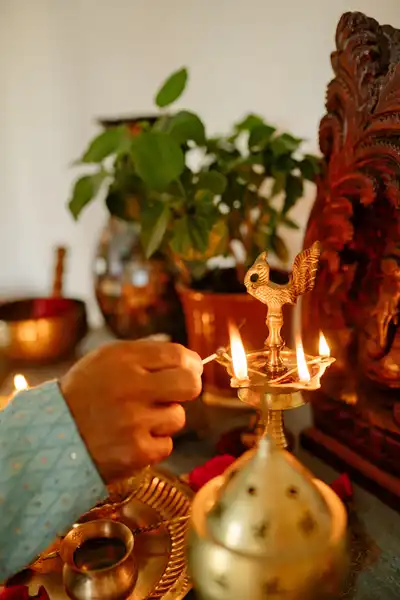
Adhik Maas, the sacred intercalary month embedded within the Hindu lunar calendar, is held in profound reverence for its unique alignment, rendering it an optimal period for religious and spiritual pursuits. The celestial harmony that envelops Adhik Maas imbues it with an elevated spiritual aura and divine favor. As lunar and solar calendars converge, cosmic forces synergize favorably, creating an opportune landscape for devotees to forge deep connections with the divine.
During the span of Adhik Maas, rituals, prayers, and acts of devotion acquire heightened significance. Temples transform into sanctuaries of spiritual resonance, resonating with hymns, rituals, and discourses that draw seekers closer to the divine realm. The recitation of scriptures such as the Bhagavad Gita and Ramayana, coupled with intensified meditation, capitalizes on the perceived potency of spiritual vibrations.
Fasting, a cherished practice emblematic of self-discipline and devotion, gains prominence throughout Purushottam Maas. Fasting serves not only as a practice of physical restraint but also as a means of cultivating detachment, shifting focus from worldly concerns to spiritual contemplation. Meditation becomes a conduit for inner tranquility and heightened awareness, fostering profound connections with the divine.
Acts of charity and selflessness assumed a central role during this time. From the distribution of sustenance to the support of education, altruistic deeds amplify spiritual merit, aligning individuals with the divine order. Adhik Maas’ emphasis on charity is akin to sowing seeds of positive karma, ultimately reaping abundant spiritual rewards.
The spiritual allure of Adhik Maas nurtures introspection, self-improvement, and rekindled devotion. Mythology, tradition, and its astronomical significance elevate it as a gateway to transcendence from the mundane. As the lunar cycle completes its course, Purushottam Maas beckons transformative journeys, harmonizing actions with the deepest spiritual aspirations of individuals.
Reflection and Self-Improvement:
Adhik Maas, a celestial gift within the Hindu lunar calendar, unfolds as a profound chapter of self-reflection and spiritual advancement. This sacred additional month beckons individuals to embark on an internal pilgrimage, a time to scrutinize their lives, beliefs, and actions with newfound clarity. It is a phase where the veils of ordinary existence are thin, allowing for a deeper connection to one’s spirituality.
During Purushottam Maas, practitioners leverage the blank canvas of this extra month to assess their deeds and initiate positive changes. The heightened spiritual energies are believed to enable a clearer understanding of individual strengths and weaknesses. This self-awareness empowers individuals to identify areas in need of personal growth. The inner landscape becomes fertile ground for sowing seeds of transformation – nurturing virtues, cultivating patience, and fostering a deeper reservoir of compassion and empathy.
Adhik Maas is also perceived as an auspicious time for self-purification. Similar to the waxing and waning of the moon, this period prompts introspection into karmic debts and merits. This introspection is more than mere evaluation; it embodies a genuine effort to recalibrate the moral compass, aligning life choices with spiritual principles. This phase of self-examination catalyzes catharsis, freeing the soul from the burden of negative actions and facilitating its embrace of the righteous path.
Central to Purushottam Maas’ essence is the belief that virtuous actions undertaken during this time yield manifold rewards. Acts of generosity, philanthropy, and selfless service are seen as investments in spiritual abundance that multiply. This belief motivates individuals to engage in actions that extend beyond themselves, nurturing a disposition of kindness that transcends the month itself. The outcomes of these endeavors are believed to resonate far into the future, enriching the soul’s journey across cycles of rebirth.
Special Celebrations and Observances:

Adhik Maas, the esteemed intercalary month in the Hindu lunar calendar, finds a spectrum of vibrant expressions across India’s diverse tapestry and its myriad Hindu communities. This period bears profound significance for believers, and its observances manifest distinctively, in harmony with local customs, traditions, and cultural subtleties.
In northern India, Adhik Maas often witnesses heightened devotion and worship. Temples resound with soul-stirring bhajans (devotional songs) and discourses. Devotees embrace extended fasting and engage in acts of kindness. In the Braj region, closely associated with Lord Krishna, Adhik Maas takes form through spirited processions, reenacting tales from Krishna’s life and culminating in the grand Govardhan Puja festival.
Southern India honors Adhik Maas with its own unique customs. Temples hold dedicated prayers and rituals, while individuals partake in recitations of scriptures. In Tamil Nadu, the month is revered as ‘Purattasi Adi,’ centering on the worship of Lord Vishnu. Devotees gather at temples for rituals and blessings. Kerala observes ‘Purushottam Masam,’ venerating Lord Vishnu, with customs similar to other regions.
Local practices add distinctive hues to Purushottam Maas’ observances. In some areas, the ‘Akhand Ramayan’ recitation—completing the epic of Lord Rama without interruption—is performed. The auspiciousness of the month also influences significant life events like weddings and initiations, deemed particularly auspicious during this time.
Throughout India, the belief that virtuous deeds conducted in Adhik Maas yield multiplied spiritual rewards infuses the month with devotion and altruism. Acts of charity, assisting the less privileged, supporting education, and engaging in community service assume special prominence, resonating with the month’s spiritual themes.
In essence, Adhik Maas weaves a vibrant tapestry of celebrations, spanning geographical and cultural nuances. From north to south, east to west, diverse Hindu communities unite in honoring this sacred interval, sharing a common devotion while cherishing unique traditions that enrich their spiritual journey.
Cultural and Social Impact:
Adhik Maas, the celestial interlude within the Hindu lunar calendar, deeply permeates art, literature, and communal gatherings, seamlessly integrating themes of devotion and introspection into the very fabric of daily existence. This unique month becomes a wellspring of creative inspiration, igniting artistic expressions, literary compositions, and communal festivities that resonate with its spiritual core.
In the realm of art, Adhik Maas ignites visual representations of deities and sacred narratives. Temples and homes come alive with intricate rangoli designs, symbolic motifs, and vibrant decorations that evoke a divine presence. Artists capture the stories of Lord Krishna, Lord Vishnu, and other deities associated with this time through paintings, sculptures, and intricate crafts, infusing them with heightened devotion and spiritual significance.
Literature flourishes during Purushottam Maas as poets and writers craft verses, hymns, and narratives that harmonize with its themes. Sacred texts like the Bhagavad Gita and the Ramayana are recited and studied with heightened fervor. Spiritual dialogues, talks, and seminars delve into the profound meanings and teachings embedded in this extra month, guiding individuals on their path of self-exploration and spiritual growth.
The cultural landscape comes alive with events and festivals that embody the essence of Adhik Maas, fostering unity and shared devotion. Communities collaborate to organize processions, fairs, and cultural performances that showcase the richness of their traditions. Folk music and dance often animate the stories and values associated with this sacred month, infusing celebrations with both joy and deep spiritual resonance.
The observance of Purushottam Maas nurtures a strong sense of community and religious identity. As individuals come together for collective prayers, rituals, and cultural events, they forge connections with fellow believers who share their devotion. This sense of community extends beyond religious practices, promoting cooperation, empathy, and mutual support.
Moreover, Adhik Maas underscores the continuity of cultural heritage across generations. Ancestral wisdom and traditions are passed down from grandparents to grandchildren, ensuring the preservation of cultural values and spiritual teachings. This continuity not only reinforces a sense of identity but also nurtures a profound appreciation for the customs and practices that bind families and communities together.
Contemporary Relevance:
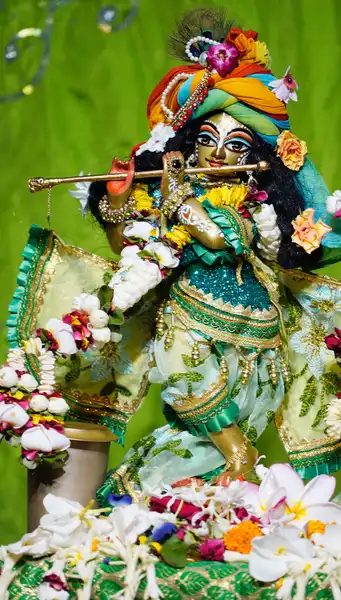
In the modern era, the practice of observing Adhik Maas thrives, bridging the gap between ancient traditions and the contemporary way of life. Amid rapid urbanization and evolving societal dynamics, Adhik Maas maintains its spiritual significance, adapting to cater to the needs and aspirations of individuals in today’s fast-paced world.
Adhik Maas has found resonance within urban settings by embracing flexibility while staying rooted in its core values. Many urban residents seamlessly integrate the observances of this month into their busy lives. Urban temples, spiritual centers, and community groups organize events tailored to professionals, students, and families, providing adaptable schedules for prayers, discussions, and cultural celebrations. Technology plays a pivotal role, with rituals live-streamed, online resources available, and digital platforms widening access to Adhik Maas teachings and practices.
Moreover, the spiritual teachings of Purushottam Maas remain relevant in addressing modern challenges. Its emphasis on introspection, personal development, and acts of compassion aligns with the contemporary pursuit of mindfulness, ethical living, and holistic well-being. The month’s focus on harmonizing material pursuits with spiritual nourishment resonates with individuals seeking balance in their fast-paced lives.
In response to changing societal dynamics, the methods for calculating Adhik Maas timings have also evolved. Advanced astronomical software, calendars, and mobile applications offer precise calculations based on sophisticated algorithms. These tools empower individuals to determine the exact dates and timings of Adhik Maas, enabling them to plan their spiritual practices and engagements with precision.
Conclusion:
Adhik Maas, the celestial intercalary month within the Hindu lunar calendar, holds deep significance in harmonizing lunar and solar calendars. Addressing the subtle divergence between lunar and solar year lengths, Adhik Maas rectifies misalignments, ensuring that cultural festivities and natural seasons remain in sync.
However, Adhik Maas goes beyond its astronomical role, becoming a time of profound contemplation, spiritual growth, and devotion. It prompts individuals to embark on an inner journey, evaluating actions, nurturing virtues, and deepening their connection with the divine. The heightened spiritual energies foster an environment conducive to meditation, prayer, and acts of kindness.
I encourage you to explore the unique observances and customs linked with Purushottam Maas. Delve into the diverse cultural expressions, rituals, and festivals that stem from different regions and communities. Immerse yourself in the narratives of deities like Lord Krishna and Lord Vishnu, enriching this sacred period. Embrace the sense of unity and collective devotion by participating in communal celebrations, whether in person or through digital platforms.
As Adhik Maas unfolds, seize this opportunity for introspection and growth. Allow its rhythm to lead you toward a deeper connection with your spiritual essence and a renewed sense of purpose. Embrace the wisdom of the ancient calendar, letting its teachings illuminate your path within the context of the modern world.
I aspire for this article to provide you with assistance. Should you discover value within these words, kindly contemplate sharing them with your loved ones. I invite you to spare a moment to offer your thoughts and appraisals below. For further remarkable content akin to this, I encourage you to delve into our website. Additionally, I extend an invitation to subscribe to my YouTube channel for forthcoming materials of similar nature. Lastly, feel unrestrained to establish a connection with me through social media. Wishing you a splendid day ahead!
हरि ॐ तत्सत्
FAQs:
Here are some frequently asked questions (FAQs) regarding Adhik Maas:

